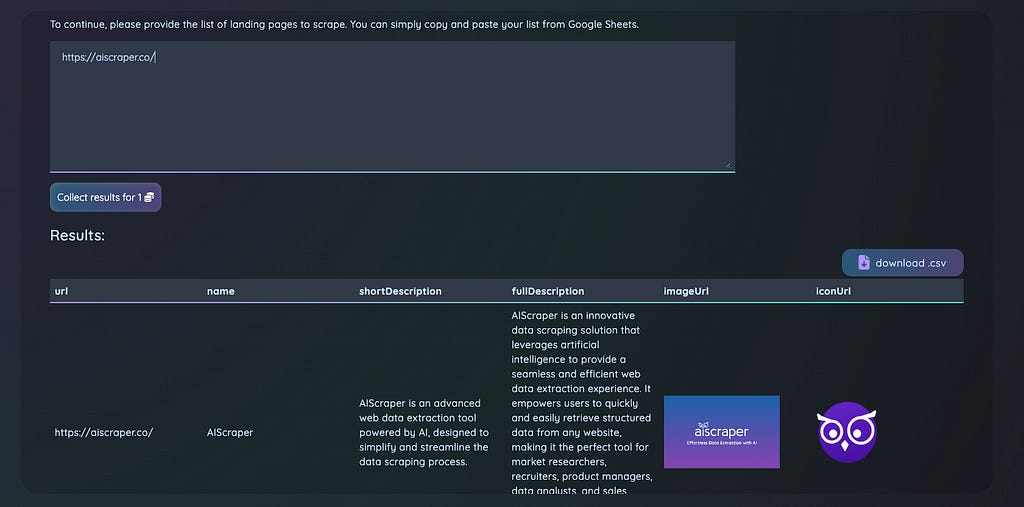
Building Comprehensive Listings: Strategies for Gathering Essential Data
Building Comprehensive Web Directories: Strategies for Gathering Essential Data

Introduction
Web directories or Listings are an organized collection of links to websites, categorized by topics and often providing summaries or descriptions of each linked site. These directories serve as valuable resources for users seeking specific services, products, or information on the internet. With the proliferation of online services, web directories have become essential tools for both users and service providers.
Let’s delve into the intricacies of web directories and the best practices for compiling accurate and comprehensive information.
Popular Listings
In the digital age, various directories specialize in listing web services and tools across different categories. These directories help users find the best software for their specific needs, such as design, video editing, marketing, AI tools, SEO and so on. Here are some notable directories for web services and tools:
G2 is a leading review platform for business software and services. It provides user reviews, ratings, and detailed comparisons across various categories, including marketing, sales, development, and more.
Product Hunt is a community-driven platform that showcases the latest tech products and tools. Users can discover new software, vote on their favorites, and read reviews from the community.
Capterra is a comprehensive directory for business software. It offers reviews, ratings, and detailed information on various software tools, including categories like project management, marketing automation, and video editing.
There’s an AI for That This directory focuses on AI tools and applications. It offers a comprehensive list of AI-powered solutions across various domains, helping users find the right AI tools for their needs.
All GPTs is a specialized directory for GPT-powered tools and applications. It lists various GPT-based services, providing detailed information and user reviews to help users choose the best AI tools.
These directories provide extensive information and user feedback on a wide range of web services and tools, making it easier for users to find the right solutions for their needs. By leveraging these resources, individuals and businesses can stay updated on the latest tools and make informed decisions.
Information Provided by Web Directories About Each Service
Web directories typically provide a variety of information about each listed service to help users make informed decisions. The type and amount of information can vary depending on the directory, but generally, the following details are included:
Service Name: The name of the service or tool, often linked to the official website.
Description: A brief summary of the service, explaining what it does and its main features.
Category: The category or categories under which the service is listed, such as marketing, AI, video editing, etc.
Pricing Information: Details about the pricing plans, including free trials, subscription costs, and any additional fees. Some directories may also compare pricing between similar services.
Features and Specifications: A detailed list of the service’s features and technical specifications. This may include integration capabilities, platform compatibility, and unique functionalities.
Images, Icon, Screenshots and Videos: Visual aids such as screenshots and demo videos that give users a better understanding of the service’s interface and usability.
User Reviews and Ratings: Feedback from users who have used the service, including star ratings and written reviews. This helps prospective users gauge the quality and reliability of the service.
By providing comprehensive information about each service, web directories enable users to compare options, read about others’ experiences, and choose the best tools for their needs. This transparency and accessibility make web directories valuable resources for both individual users and businesses.
How to Gather Information for a Web Directory
Creating a comprehensive and reliable web directory involves gathering detailed information about each listed service. There are several methods to collect this information, depending on how the directory operates and the resources available. Here are the main approaches:
Owner Submissions: Service providers can submit their information directly to the directory. This method ensures that the data is accurate and up-to-date, as it comes directly from the source.
Manual Collection: The directory team manually collects information from the service’s website and other online sources. This approach is labor-intensive but allows for high control over the quality and consistency of the data.
Web Scraping: Automated tools, known as web scrapers, can collect information from multiple websites efficiently. This method saves time and can gather large amounts of data quickly.
API Integration: Some services provide APIs (Application Programming Interfaces) that allow external systems to access their data. Directories can use these APIs to gather and update information automatically.
Hybrid Approach: Combining multiple methods can enhance the quality and comprehensiveness of the directory. For example, initial data can be collected via scraping, while updates and new entries can be handled through owner submissions.
Collect data from Landing Pages for directory
If you are a directory owner or a product owner required to provide information about your product, this section is for you. Instead of manually gathering data, you can use scrapers to collect information. However, many traditional scrapers require manual configuration for each product/service and technical expertise. This is where AI comes to the rescue.
How to collect information about service from landing page for ypur directory effortlessly? Try using an AIScraper. Simply list the websites from which you want to collect information for your directory, run the scraper, wait a minute, and all the necessary data will be ready. The AI scraper efficiently gathers the following information:
- Name: The name of the service or product.
- Short and Extended Descriptions: Summarizes the entire page content, even rephrasing it for clarity and conciseness.
- Icon: Retrieves the service or product’s icon.
- Shareable Image: Collects images suitable for sharing and promotional purposes.
- Category Selection: Chooses relevant categories from a list you provide.
- Pricing Information: Provides detailed pricing data.

This approach significantly saves time, allowing you to focus on other critical tasks. By leveraging AI technology, you can ensure that the data collected is comprehensive and accurate without the need for extensive manual effort or technical skills. See the full demo here
Conclusion
In conclusion, web directories play a crucial role in organizing and presenting information about various services and tools, making it easier for users to find what they need. By understanding how these directories operate and the types of information they provide, we can appreciate their value in the digital landscape. Gathering this information can be done through owner submissions, manual collection, web scraping, or API integration, each with its own benefits. Leveraging AI scrapers further simplifies the process, allowing for efficient and accurate data collection with minimal manual effort. By utilizing these methods, directory owners can ensure their listings are comprehensive, up-to-date, and valuable to users.
